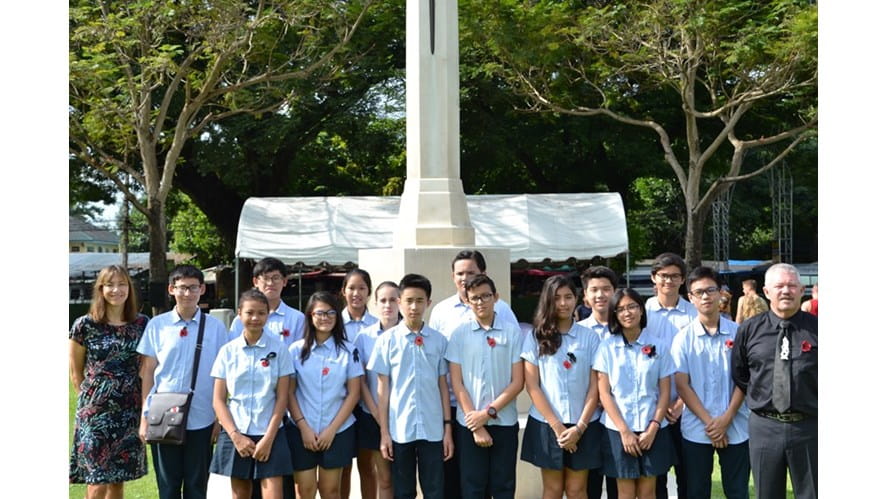Regents Remembers
Students and staff took a trip to Kanchanaburi to represent the school at the annual Service of Remembrance on the 11th November.
Students and staff took a trip to Kanchanaburi to represent the school at the annual Service of Remembrance on the 11th November.
A group of students went to Kanchanaburi to represent the school at the annual Service of Remembrance on the 11th November. The trip was led by the History department and there were 14 students from years 9 and 10, accompanied by Ms Katie Cooke, Mr David Williams and Mr Clarence Mansell. We left the school early on the 10th to first visit the Hellfire Pass Memorial Museum and learn about the infamous Death Railway. Mr Williams led a moving 2 minutes of reflection at the memorial there after a walk along the remains of the railway itself and an illuminating visit to the museum. We then travelled to Kanchanaburi where we visited the Thailand-Burma Railway Museum before checking into our hotel for the evening. The next day at the Service of Remembrance, at the Don Rak War Graves, as the guests were arriving the girls helped with the poppy appeal while the boys gave out water. During the ceremony Brian and Hong Yok laid a wreath on behalf of the school. There was then a short drive to the Chong Kai War Cemetery where Mr Clarence Mansell played the Last Post and Ava Barnett laid a wreath. All the students were then given wooden crosses to place on a grave at random in order to remember and pay respect to an individual soldier. We then headed to the “Bridge over the River Kwai", made famous by the film of the same name, where we had lunch before heading back to school. The students represented the school in an exemplary manor as well as learning a great deal about the sacrifices made not only by the prisoners of war but also by the many South East Asians who also lost their lives building the railway in such dreadful conditions.





